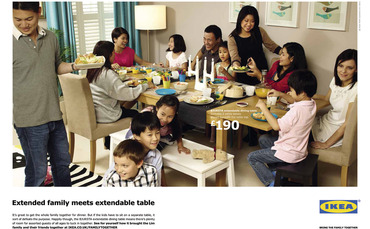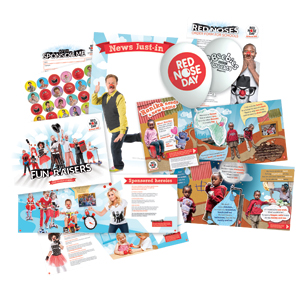A key recent source of those facts is From Letterbox to Inbox: Building Customer Relationships, a joint report published this year by the Direct Marketing Association (DMA), HP and market research firm FastMap. Its findings will surprise many.
“Many young people today could easily choose to conduct their lives entirely online, but they don’t,” explains Julia Cole, UK and Ireland marketing manager for HP. “In fact, the youngest group of consumers surveyed in the From Letterbox to Inbox report (aged 18-34) were found to be the age group least likely to predict a world where everything has become digital. One in five of this group say this will never happen, twice the level of older age groups. Added to this is the fact that across all consumers, 45% believe a world without physical communications would be worse – just 15% think it would be better.”
Indeed, although sales of printed magazines, books and posters and the like are generally going down, that is not necessarily as a result of the younger generation turning off print. Stephen Peters, the author of the book Kindle Culture found for example that the largest group of Amazon’s e-reader users were in their 50s, the second largest their 40s and the third largest their 60s.
Contrast this with the following revelation from marketer Jacky Hobson, director at Up Marketing: “The evidence points to the fact that the ‘Millennials’ or ‘Generation Y’ love print. While they’re tuned in to digital and are accustomed to living their lives online, they, like the rest of us, enjoy the tactile nature of it. If anything, the fact that they receive less print seems to afford it even greater value in their eyes.”
Part of that value comes from trust. The online world is a hive of pseudonyms, false information and conspiracy theories. The From Letterbox to Inbox report found that print is viewed as the more reliable medium.
“56% of those surveyed for the report said they found printed marketing to be the ‘most trustworthy’ of media channels,” says HP’s Cole.
She adds that print can also offer the 18-30s something they can’t get digitally: “Print remains a distinctive, tactile medium within the marketing mix. The vast selection of beautiful and innovative printing and finishing techniques now available, as well as the opportunity to personalise marketing materials, provide a unique experience, appealing to senses in ways that digital media cannot.”
Both Hobson and Cole say most marketers are savvy enough not to believe the hype about the younger age group’s disengagement with print and to ensure a print element is always a part of the marketing mix. Kian-Garin de Loach, creative lead
at Diabetes UK, is certainly one of those marketers keen to speak up about print’s continued role for the under-30s.
Still relevant
“Print remains a key part of many of the campaigns we do and it is still very relevant to under 30s,” he says. “We continue to get demand from both parents and young people for print materials. There’s an element of confidence and comfort in accessing print, particularly for health information.”
All this positivity about print is not to say that every campaign for the under 30s has to have a print element to it at all costs. And marketers have to be clever with print if they are to make it appealing to the under 30s. Firstly, this means using the print skills Cole talked of to make the materials appealing visually and to touch. A second element is how the print works with other channels – Diabetes UK is currently trialling QR codes to improve in this area. Thirdly, print has to be used to communicate the right type of information.
“Print currently works for all our audiences but in different ways,” says de Loach. “For example, we produce a magazine for 5-9 year-olds, which is print-based and although we are piloting a tablet and e-reader version, we expect print to remain important as a health-based product like this will typically be introduced by a parent or carer and that conversation isn’t necessarily as natural with a digital device.”
Hobson adds that marketers should not try to restrict print to certain areas. She says it’s wrong to think print is only suitable for certain types of products, or certain forms of campaign. “Nor is it more or less suited to a B2B or a B2C campaign,” she says.
So print is not only still relevant to the under 30s, but marketers should also be looking to expand the boundaries of where it has traditionally been used.
But how much longer will these positive stats still be true of this age group? The next generation will after all never have known life without the internet, mobile phones, Xboxes and e-readers. The next is the first truly digital generation, and so print’s task will surely be more difficult.
Perhaps, but most of the reasons the current under-30s love print will hold even more true for the next generation. It will be even more different to the digital media they are used to and seen as even more of a ‘trustworthy’ source of information as digital platforms multiply further and ‘social’ information further clouds the already muddied waters of ‘truth’. And then you cannot underestimate the new desire of each generation to rebel against the one that has gone before. A digital kickback is long overdue and print may just be the beneficiary.
Ikea – Bring the family together
 The concept behind Ikea’s recent campaign was ‘Bring the family together’ and although television plays a big role in its communications, Ikea says the print element is crucial.
The concept behind Ikea’s recent campaign was ‘Bring the family together’ and although television plays a big role in its communications, Ikea says the print element is crucial.
Ikea advertising manager Vala Magnadottir says: “TV works to position the IKEA brand, and the 30-second TV spots do this very well. However, we believe print is still a good way for us to showcase our home furnishings products and solutions, especially in the case of the ‘Bring the family together’ campaign.
“It’s also a great way to show the benefits of these products and demonstrate how they can come to life in a home, with an emphasis on quality and affordability.
“We know that people spend time looking at our print communications, and Vizeum, our media buying agency, carefully selects not only the best titles to target our core audience, 25–44 year-old women, but also to plan the correct level of digital media to ensure we reach and build a deeper engagement with the brand.”
Yum Yum peanut butter campaign
 A campaign for South African peanut butter brand Yum Yum began in 2012, and is still live in outdoor media. The campaign was intended to boost Yum Yum peanut butter’s market share by entrenching the ‘serious about smooth’ positioning that the brand wanted to own. The results were so outstanding that the campaign continued well beyond its original schedule.
A campaign for South African peanut butter brand Yum Yum began in 2012, and is still live in outdoor media. The campaign was intended to boost Yum Yum peanut butter’s market share by entrenching the ‘serious about smooth’ positioning that the brand wanted to own. The results were so outstanding that the campaign continued well beyond its original schedule.
“The use of print media was mainly focused on outdoor sites – billboards and bus stops in key central urban areas – and also with innovative card-based stands in retail,” explains Mimi Nicklin, strategic director at 34Group, which ran the campaign for Yum Yum.
“Print media were central and critical to the campaign success.
“The brand wanted something highly engaging to cut through the clutter and beyond the ‘standard’ billboards. We had great success with outdoor billboards alongside major highways that were motion activated and featured a hammer moving continuously up and down (crushing the peanuts) to really capture attention. A national survey of South African youth found this campaign drove Yum Yum higher up the ranks of ‘cool factor’ than it ever had been.
“For the first time in history, Yum Yum became the market share leader in the peanut butter category with a 33% market share ahead of its biggest competitor following this campaign. This was beyond all the objectives and expectations of the campaign – and it is still running!”
Comic Relief 2013
 Comic Relief is one of the best known and most loved charity campaigns in the UK. For the 2013 campaign, the print elements were crucial.
Comic Relief is one of the best known and most loved charity campaigns in the UK. For the 2013 campaign, the print elements were crucial.
“During our Red Nose Day 2013 campaign (between September 2012 and March 2013) we sent out a number of targeted direct mail communications to our existing public fundraiser databases and schools contacts,” explains Hannah Fox, head of
media for Comic Relief.
“The objective of the mailings was to raise awareness of the campaign and generate orders of our printed fundraising kits and merchandise.”
Fox says that while Comic relief does not collect specific data about age group take-up, she can say with confidence that print is still effective for the 18-30 age group.
“While we don’t collect data based on age for each individual supporter, our audience segmentation model gives us a good indicator that a significant proportion of our database is under 30,” she says. “We certainly see strong results from our younger segments. While they’re not the best performing group, they are still responding in numbers worth targeting. What’s more, our data showed that this segment proactively ordered our fundraising kits in similar levels to older audiences, and went on to use them.”







